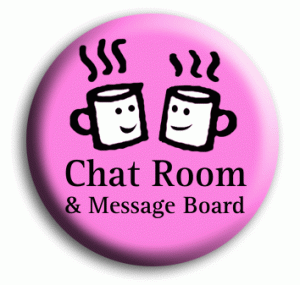 During the recent conference at Bilkent University, an issue that was repeatedly mentioned was the dilemma of getting students to use language in real time situations. This article 1) discusses the implications of getting language learners to use internet chat rooms for language learning purposes, and 2) aims to prove that the author wasn’t asleep during the conference.
During the recent conference at Bilkent University, an issue that was repeatedly mentioned was the dilemma of getting students to use language in real time situations. This article 1) discusses the implications of getting language learners to use internet chat rooms for language learning purposes, and 2) aims to prove that the author wasn’t asleep during the conference.
Advantages of Chat Rooms
Firstly, they allow learners to interact in an authentic context with native speakers without being restricted by location. In many ways, this is an unprecedented learning opportunity. Language students can use a chat room at any time to interact with any number of people anywhere in the world.
Secondly, Chat rooms can promote learner autonomy. This is primarily due to the fact that the teacher’s role is minimized. Transcripts are generated which are useful for studying the language used. Every line of conversation is recorded, and can be seen in full thereafter.
Another advantage is that students have the opportunity to observe the language used by native speakers. Learners are able to see how a conversation develops, and also to notice what kinds of response are suitable (or unsuitable) in given situations.
Chat rooms also promote active involvement. The learner is enticed into conversing with others, and yet can withdraw as and when they feel like it.
Learners are also given the opportunity for skills development and practice. Chat rooms offer the learner the chance to produce language which is somewhere between everyday spoken English and the language in its written form. Many learners may not have previously been exposed to such informal written English.
Finally, they allow communication to take place in real time. This is a truly authentic communicative device. The conversations are real and the frameworks around which they are built are extremely loose. They therefore necessitate a degree of spontaneity and adaptation. Also, the sense of real time is a little more forgiving than a face to face spoken encounter. Firstly, there is that all important thinking time between seeing what the other person has written and making one’s reply. Secondly, there is the factor of anonymity which potentially increases the learners’ confidence.
Learners’ Difficulties with Chat Rooms
Learners’ keyboard skills in English are usually slow which means that they often miss part of the conversation thread. It is the nature of chat room dialogue for conversations to move very quickly at times, thus leaving the learner somewhat confused and downhearted.
Furthermore, the way the conversation scrolls down the screen requires the participant to read text very quickly. This is often difficult for EFL students, due to a deficiency of the type of reading skill which a native speaker would inherently possess.
Chat room participants also often use slang and abbreviations which EFL learners may not be familiar with. Having previously stated that students may benefit from seeing how native speakers use the language, it should be noted that an ‘internet language’ is evolving rapidly, which differs in many ways from spoken English.
Native speakers using chat rooms may discuss topics which are culture specific to the English speaking world, or inappropriate or offensive to some learner groups. This may lead to misunderstandings which have nothing to do with the learner’s knowledge of the language.
A Final Word
The author would like to mention that he has used chat rooms in his own language learning, and has found most of the advantages mentioned are generally realistic. Furthermore, the author has found that introducing himself as a learner of Turkish has proven beneficial in setting up the nature of the dialogue.
